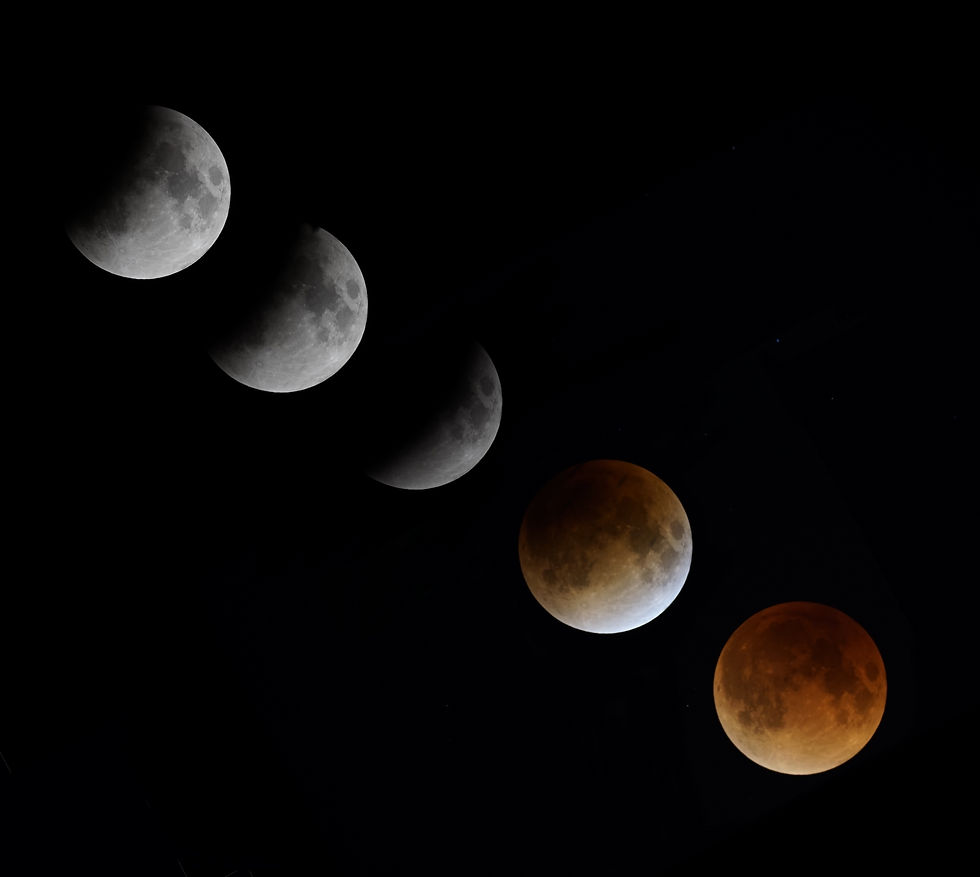Observer's Corner for January 2019
By Professor Hal Jandorf
JANUARY'S TOTAL LUNAR ECLIPSE


In 2017, United States was treated to a rare and spectacular Total Solar Eclipse.
This time, the MOON takes the stage for a beautiful Total Lunar Eclipse,
enjoyed for all Americas, North,
Central and
South! Not only
it’s a weekend
(Sunday evening), it happens
before a holiday so even the kids can watch the progress at “Prime Time” lunar gazing.
The Eclipse will happen during a “Super Moon”, which is the Full Moon is closest to the Earth (perigee).




Why doesn’t a lunar eclipse happen every Full Moon? Because the lunar orbit is approximately 5 degrees tilted off the Earth’s orbit around the sun (the Ecliptic Plane).
When the lunar orbit path crosses the ecliptic at full moon, the half of Earth that is night will watch a lunar eclipse.
Last July, the Eastern Hemisphere saw the Lunar Eclipse. Western hemisphere (us) saw nothing usual.
Now, on Sunday January 20th, it’s our turn!
When the Full Moon plunges into the Earth’s shadow, a wonderful show awaits. The Earth’s atmosphere refracts or bends orange/red rays of sunlight to illuminate the darkened full moon with eerie, orange/red glow! The color and brilliance depends on the condition Earth’s atmosphere during the lunar Eclipse.
If the our global atmosphere is “dirty” due to recent volcano eruptions (note: there was several volcano eruptions in Mexico in December) , the eclipse will be darker reddish.
If the global atmosphere is relatively clean, the eclipse will be brighter yellow/orange.
In 1982 after major volcano eruptions on Earth, the Lunar Eclipse disappeared during Totality!
You judge the darkness and color of this Lunar Eclipse with the DANJON SCALE. (see chart)
Here are the statistics for Ventura County on Sunday, January 20th:
Time is in PST
6:34 PM Full Moon enters the Penumbra, the lighter part of the Earth’s shadow.
7:33 PM Full Moon enters the Umbra, the darker Earth’s shadow.
Here is where you will really see things happening!
8:40 PM Totality starts
9:12 PM Mid-Eclipse!
9: 43 PM Moon starts to leave the Umbra
10:51 PM Moon has left the Umbra and is in the Penumbra
11:49 PM End of the Eclipse!
Important Statistics for Ventura County on Sunday, January 20th:
6:34 PM Full Moon enters the Penumbra, the lighter part of the Earth’s shadow.
7:33 PM Full Moon enters the Umbra, the darker Earth’s shadow.

VCAS Public Lunar Eclipse Observing Event
Moorpark College Observatory January 20th
Event and Lecture Starts at 6:30PM with parking available in the Observatory lot.

Here's two of my images taken using my 4 inch diameter refractor telescope with a focal length of 900 mm from my backyard in Thousand Oaks.
I use 200 ISO at f/9 from 1/1000th at Full Moon and 10 seconds at totality.
The image captioned “Apples and Oranges” depicts the subtle changes of colors from each lunar eclipse to another, from brick-red to yellow orange!
Although you can see this with un-aided eyes, I highly recommend to view the lunar eclipse with a simple pair of binoculars or a small quality telescope to enhance nature’s wonder!
All we have to do is to wait for CLEAR SKIES!!! Good luck!
Everyone is welcome to this event!
If you enjoy “OBSERVER’S CORNER”, please let VCAS know.
Positive comments or changes will be extremely appreciated!
